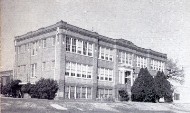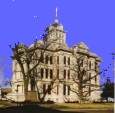Milam County Historical Commission
Milam County, Texas
Milam County, Texas






A visit from Chief White Feather
by Jeanne Williams - Temple Daily Telegram
February 13, 2012
MILANO - About 20 years after a command performance at The White House, renowned opera
singer turned evangelist, Dr. Teyet Ramar - better known as Chief White Feather - was
at the First Baptist Church in Milano teaching a crowd of youngsters how to sing “Jesus
Loves Me” in his native Sioux tongue.
“He did come in full Indian attire with a large headdress,” said Linda Bullock Wyatt.
“He played the piano and sang.
“The only song I remember was ‘Jesus Loves Me.’” Wyatt said. “He taught us to sing it
in his language. What I remember is something like ‘Ha Jesu wash-tay ... Ha Jesu wash-
tay’, which was ‘Yes, Jesus loves me. Yes, Jesus loves me.’”
The guest of the church pastor, the Rev. Walter M. Fox, and his wife, Ann, the famed
performer turned evangelist preached a sermon dressed in a business suit, recalled John
M. Williams of Rapid City, S.D., who was a 6-year-old boy living in Milano at the time.
“The service was at night and he preached a sermon detailing the difficulty he had in
the tribe when he became a Christian, ” Williams said. “He had become an outcast.”
After preaching a message, Chief White Feather “exited into one of the little rooms to
the side and came back out in all his tribal splendor, including brightly colored
buckskins, moccasins and the flowing headdress,” Williams said.
While details of Chief White Feather’s background are sketchy, various sources place
him as the grandson of Sioux Chief Sitting Bull and a graduate of Shelton College in
New York City. Before his conversion to Christianity, Chief White Feather was a
featured organist at Broadway theaters. At one time in his entertainment career, he was
described by a New York Times reviewer as “the most musically gifted American Indian in
public life.”
Chief White Feather is the topic of many genealogical inquiries on the Web, has been
referred to in numerous church-related articles across the nation and was among the
celebrities featured at a youth rally in Chicago on May 30, 1945.
Chief White Feather, according to some sources, was the child of a Sioux father and
Chippewa mother. He often appeared as a Sioux Indian chief, lecturing on American
Indian life and as an international concert artist in America and Europe, sang in seven
languages and spoke four languages fluently. Once he was converted to Christ, he
dedicated his talents to Christian evangelism.
He is referenced in various church-based publications as a “brilliant organist, pianist
and carillonneur.”
Chief White Feather performed for royalty, and was invited by President Franklin D.
Roosevelt and Eleanor Roosevelt to sing at the White House in the 1930s for King George
VI and Queen Elizabeth II.
George Beverly Shea, Grammy winner and member of the Gospel Music Association Hall of
Fame and religious Broadcasting Hall of Fame who is associated with the Rev. Billy
Graham’s ministries, references Chief White Feather’s White House performance on page
197 of his book titled “How Sweet the Sound.”
“After singing two operatic arias, for which his small audience showed great
appreciation, the chief asked ‘May I sing something from deep within my heart?’
“Soon they were hearing the beautiful words of ‘I’d Rather Have Jesus.’ When he
finished, in the silence of the moment, the queen said to him, ‘This song bespeaks the
sentiment of my heart and that of my husband.’”
Thirty years later, Shea wrote, Bishop Michael Baughen of All Souls Langham Place in
London was to speak at the chapel attended by Queen Elizabeth II, called the Queen
Mother after her husband’s death, who was so loved by the people of England. Baughen,
having heard the story of Chief White Feather singing “I’d Rather Have Jesus” at the
White House, wrote to the secretary of the Queen Mother and asked for permission to
include the incident in his sermon. It was reported that she remembered and the story
was told again.
Chief White Feather also made a lasting impression on a congregation of worshipers at
the First Baptist Church in Milano one Sunday night in the mid-1950s.
“He patted me on the shoulder after I told him I wished I was an Indian,” Williams
said. “He told the congregation how eagles were trapped and only one feather at a time
was pulled. We were able to meet him after his presentation as he stayed in front of
the auditorium to answer questions.”
So taken with the Native American evangelist, Williams persuaded his mother to make him
a flowing Indian headdress of chicken feathers. Williams, who lives in Sioux Indian
country in South Dakota, said he has asked Native Americans about Chief White Feather,
but none have heard of the man who was the toast of Broadway, and the White House.
White Feather also may have inspired Wyatt to use her musical talents for the Lord. She
became church pianist/organist when she grew up.
“I never knew he was famous, but he sure stuck in this little girl’s memory,” Wyatt
said.
jwilliams@tdtnews.com
.
All articles from the Temple Daily Telegram are published with the permission of the
Temple Daily Telegram.
All credit for this article goes to
Jeanne Williams and the Temple Daily Telegram
Temple Daily Telegram.
All credit for this article goes to
Jeanne Williams and the Temple Daily Telegram